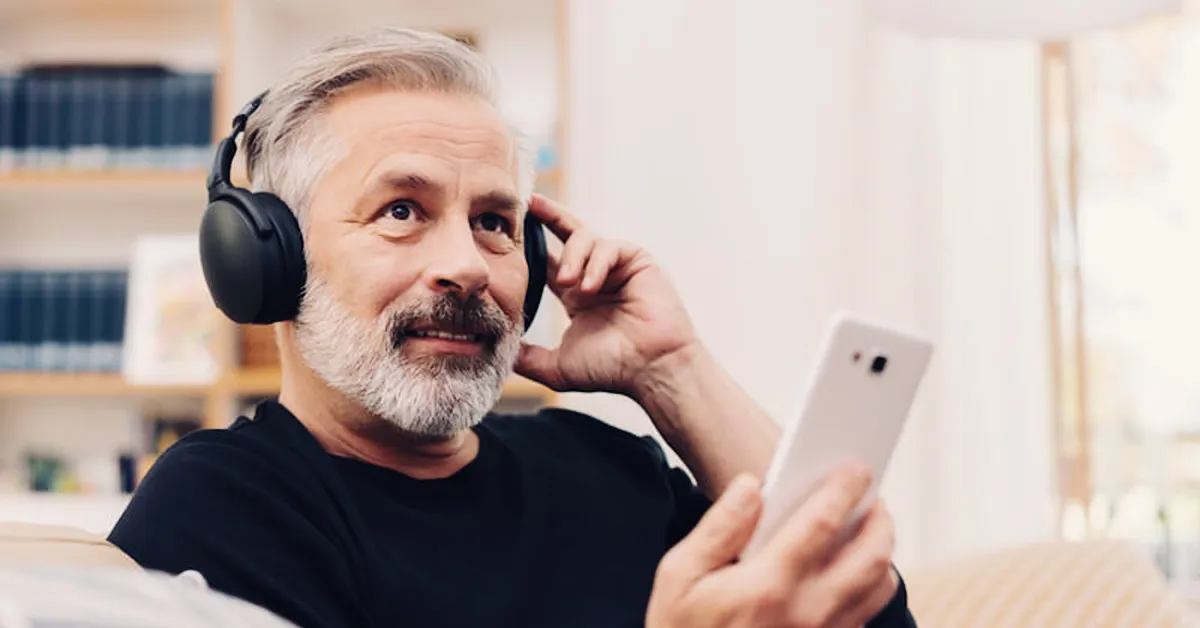Over-ear headphones are a popular choice for people who want to immerse themselves in music or games without distractions or interruptions.
However, wearing them for extended periods can sometimes cause discomfort or pain, especially if the fit is too tight or the ear pads are too hard.
In this blog post, we’ll discuss how to wear over-ear headphones comfortably and avoid common issues by using the concepts of perplexity and burstiness.
How to Find the Right Fit for Over-Ear Headphones
Locating the optimal match for over-ear headphones can be a daunting task. A crucial initial phase is identifying the appropriate size and shape to accommodate your head and ears.
This could potentially necessitate experimentation, as not all headphones are crafted equally. It is common for headphones to have a modifiable headband, which can be lengthened or shortened to suit your cranium and facilitate a comfortable fit.
The ear cups ought to completely enclose your ears without applying excessive pressure.
To guarantee that you are utilizing the headphones correctly, scrutinize the “L” and “R” labels located near the ear cups and line them up with your left and right ears correspondingly.
This will guarantee that the sound quality is level and that you are fully benefiting from the headphones. Let us discuss this in more detail.

Adjust the Headband
Once you’ve found the right size, adjust the headband so that it fits snugly but not too tightly on your head. A loose headband can cause the headphones to slip off, while a tight one can cause discomfort and headaches.
To adjust the headband, pull or push the ear cups up or down until they sit comfortably on your head. You can also adjust the angle of the ear cups slightly to improve the fit.
Position the Ear Cups
The ear cups should be positioned directly over your ears, creating a slight seal effect that cancels out noise and enhances the sound quality.
If the ear cups are too small or too shallow, they may not cover your ears completely, causing discomfort or pressure. Adjust the ear cups slightly by rotating them or sliding them up or down until they cover your ears comfortably.
Make sure that the cushions are touching your skin but not pressing too hard against it.
Replace the Ear Pads
If the existing ear pads are too hard, too thin, or too worn out, you may want to replace them with thicker, softer, or more breathable ones. Many headphones have replaceable ear pads that you can buy separately and install easily.
Look for ear pads that are made of memory foam, gel, or breathable fabric to improve comfort and reduce sweat and heat buildup. Some ear pads even come with cooling gel inserts or perforated designs that enhance the airflow.
Stretch the Headband
If the headband is too tight or causes discomfort, you can try stretching it slightly by placing it around a row of books or a basketball that’s wider than your head. Leave it there for a few hours or days to allow the band to stretch and conform to your head shape.
Be careful not to stretch it too much, as this may cause the band to lose its shape or become too loose. Repeat the process gradually until you find the right level of tightness.

How to Wear Over-Ear Headphones with Glasses
If you wear glasses, you may find that the ear cups press against the arms or frames, causing discomfort or distortion. To avoid this, you can cut small notches into the foam ear pads to accommodate the glasses or switch to thinner frames that don’t interfere with the headphones.
You can also try adjusting the angle or position of the ear cups to create more space for the glasses. Some headphones have a swivel or tilt mechanism that allows you to adjust the angle of the ear cups independently.

How to Wear Over-Ear Headphones for Extended Periods?
It is of utmost importance to wear over-ear headphones properly if you intend to wear them for prolonged periods without experiencing discomfort or injury. To prevent undue pressure on your head and ears, it is crucial to take frequent breaks.
Furthermore, it is imperative to periodically adjust the headband and ear cups to ensure that they remain comfortable. Should you feel any uneasiness or pain, it is essential to remove the headphones immediately and provide ample rest for your ears and head.
Conclusion
Wearing over-ear headphones comfortably is crucial for an enjoyable listening experience. To wear headphones comfortably, choose the right headphones, adjust the headband and ear cups, and take breaks when wearing them for extended periods.
Remember to monitor your comfort level and take action if you experience discomfort. By following these tips, you can wear over-ear headphones comfortably and enjoy your music without any discomfort or pain.
- Charging Bluetooth Headphones During Use: Is It Possible? - January 9, 2024
- Why Over-Ear Headphones Best for Hearing Health? (7 Reasons) - December 12, 2023
- Fixing the Bose Earbuds Not Charging in Case Problem: Solutions That Work - November 24, 2023

